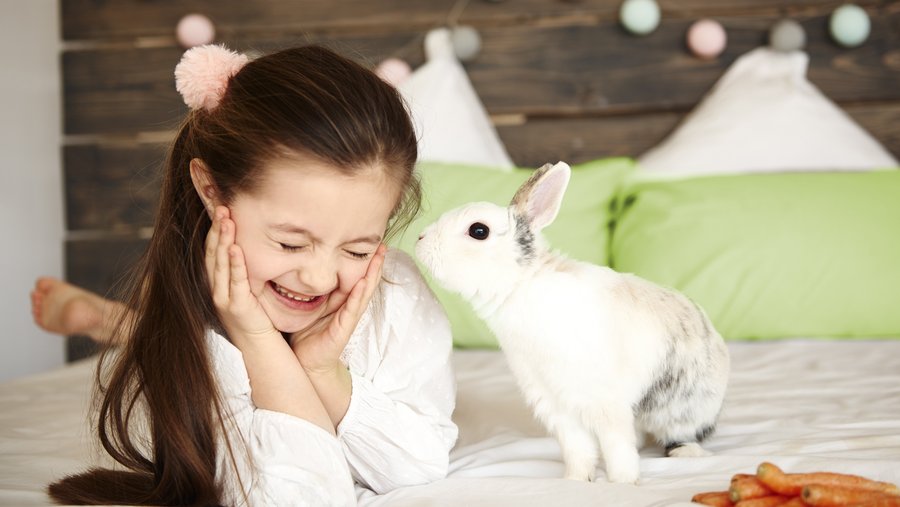Rabbits prefer to be quiet rather than loud.
Expressing themselves loudly? Not really the thing of rabbits. Of course, they can also growl threateningly or hiss fearfully. But when something doesn’t suit them, their hind paws come into play much more often and are then used energetically. You’ve probably experienced this before: You pet your rabbit and when it suddenly doesn’t like it any more, it stomps wildly with its hind paws and tries to free itself. A clear sign that you should stop petting it.
Rabbits love physical contact.
Unlike many other rodents, (dwarf) rabbits like physical contact with you. They are social creatures that like to live in groups. And because rabbits also groom each other, they love to do this with their humans. To do this, it nudges you with its snout and holds out its head. This is an unmistakable sign that your rabbit is now ready for some petting (which is the same as grooming). If it also licks you, it is a social gesture and not, as is often mistakenly thought, a sign of lack of salt.
Rabbits show their satisfaction.
A sign of complete relaxation is when your rabbit lies on its back or stretches out all fours in a relaxed manner. If it now also starts to “crunch” its teeth softly, this is an expression of the highest happiness. But beware: more teeth grinding can also be associated with pain or discomfort. When rabbits feel good, they also like to roll around on the floor once in a while. Of course, your long-eared rabbit is especially happy when it can jump around. Especially outside in the summer enclosure, it’s quite possible that you’ll see this happen often.
Rabbits like to sit up and beg.
What looks so cute is, of course, first of all to keep an eye out for enemies. It gives them a good view of everything. But your rabbit also likes to stand on its hind feet at home. But then because it is curious and wants to know what is happening in its environment. Or if you give it something tasty to eat. It will then stand up and sniff it curiously.
Rabbits also talk with their ears.
Wiggle their ears? Rabbits love to do that. Their ears are a good indicator of their mood – provided you have a rabbit with erect ears and not floppy ears. If your rabbit puts his ears back, it depends on the exact position: If the ears lie relaxed backwards, it is happy all around. However, extremely close-sitting ears can also express fear. In this case, the eyes are usually wide open. You will quickly recognise the difference. If your rabbit is curious about something, it will tilt its ears slightly forward. If the ears are moved forward or to the side, it is particularly attentive. Also, when it hears a noise, the ears are aligned accordingly in order to locate the direction.

